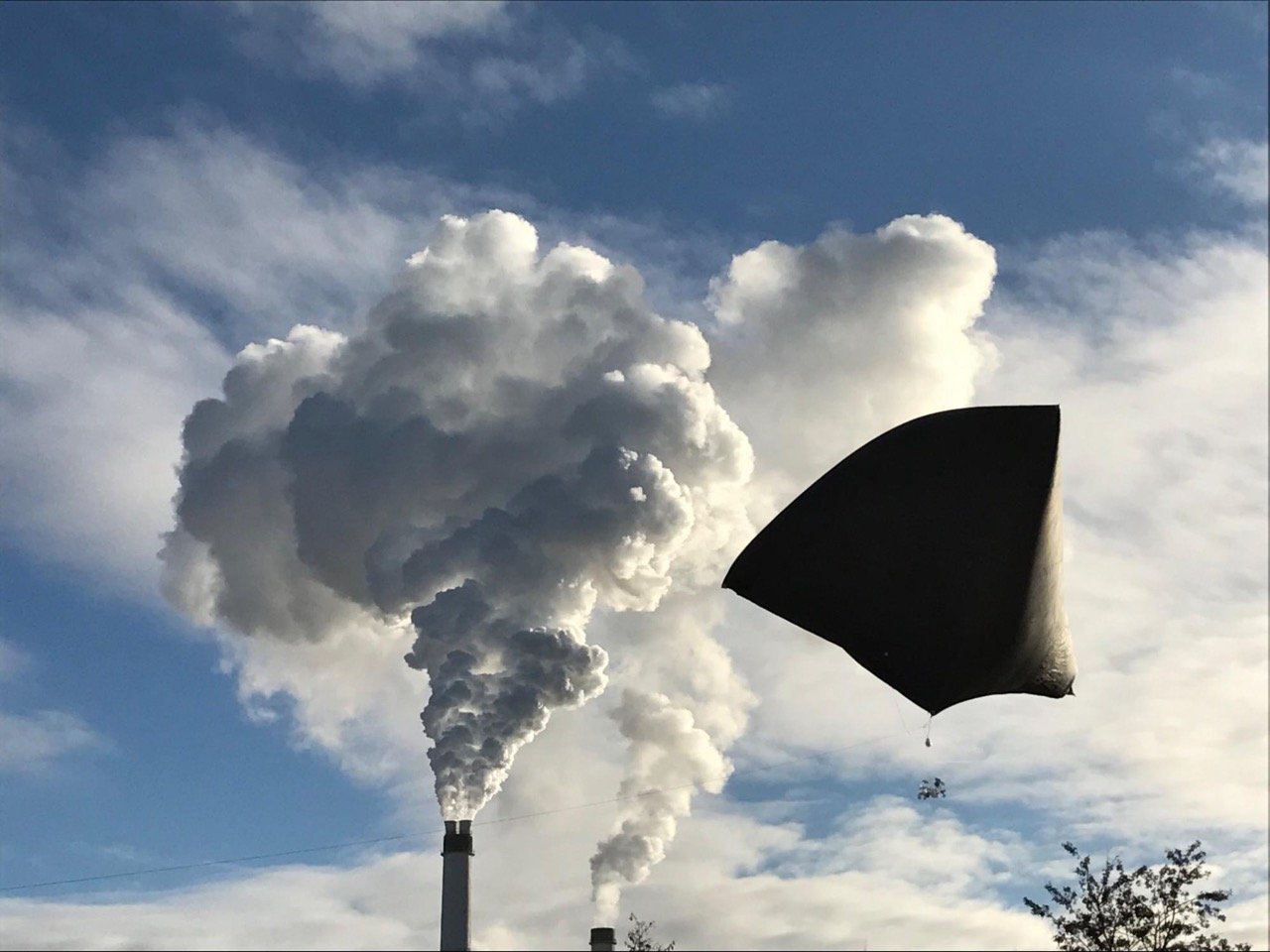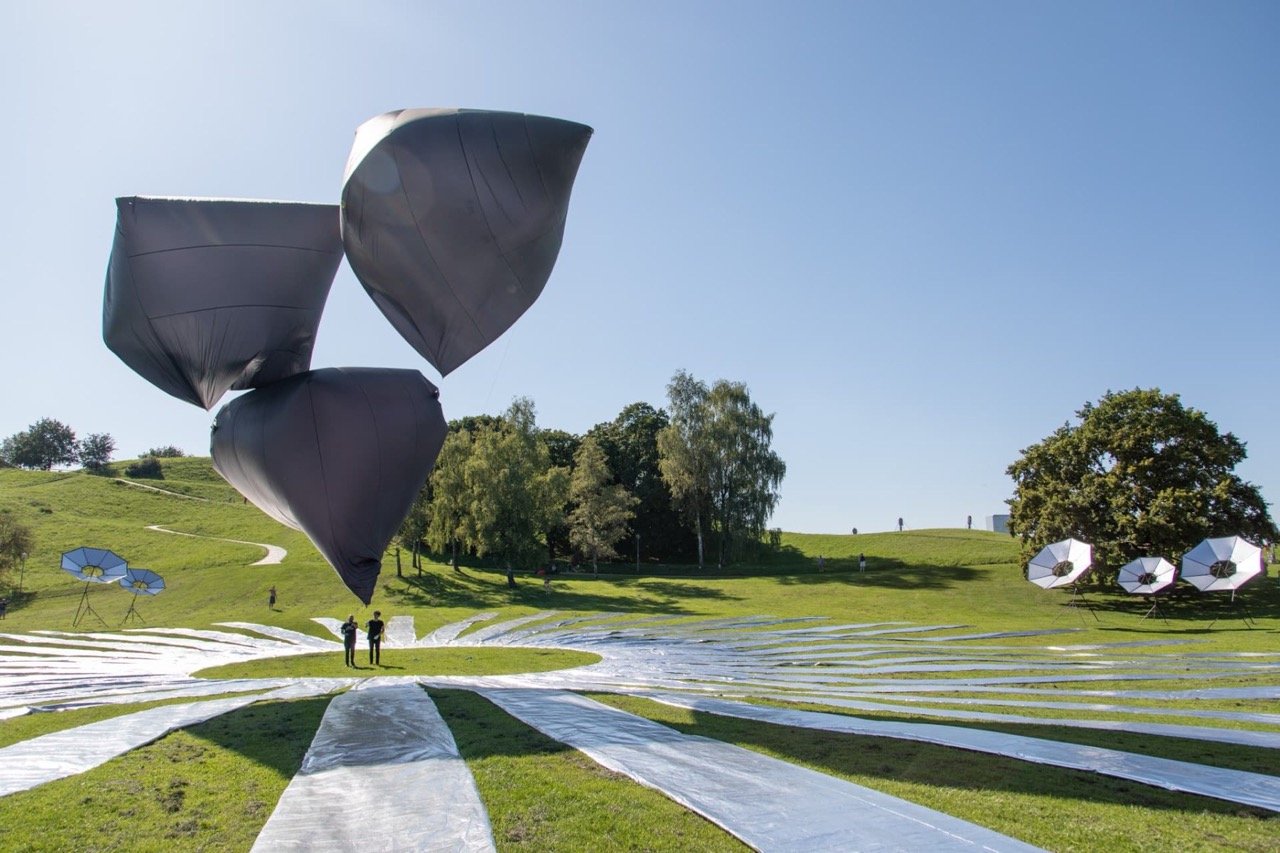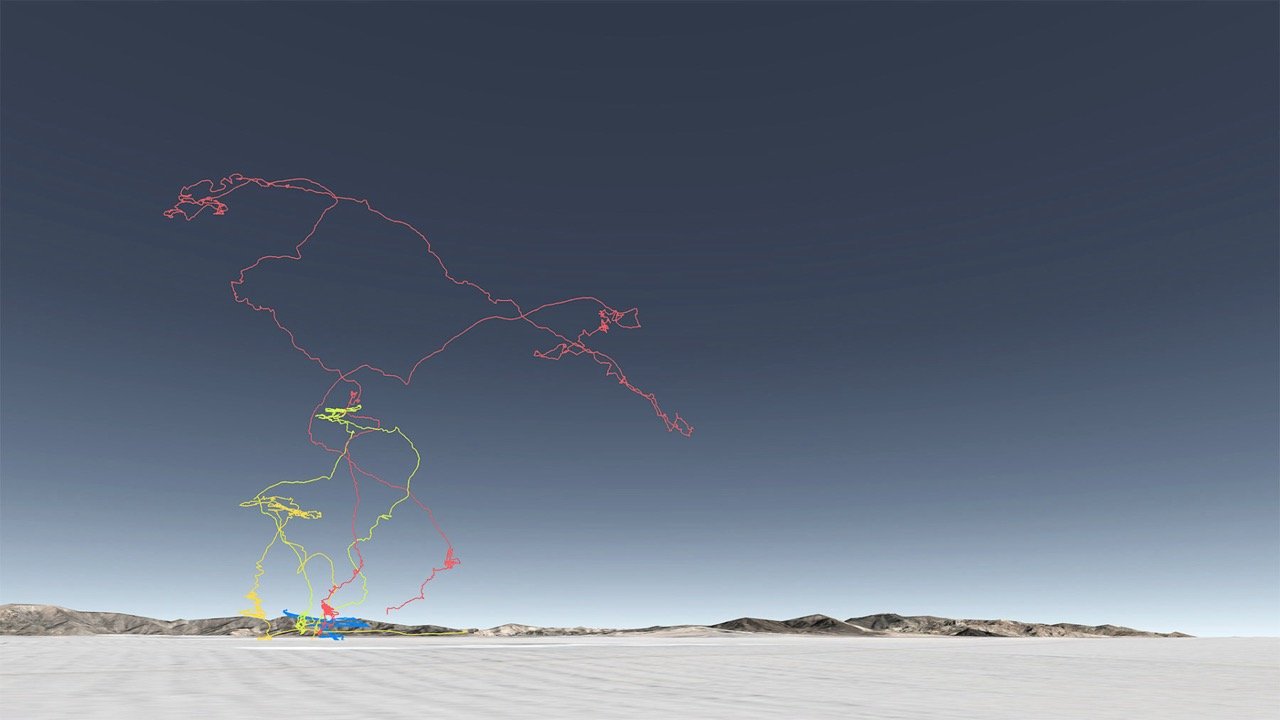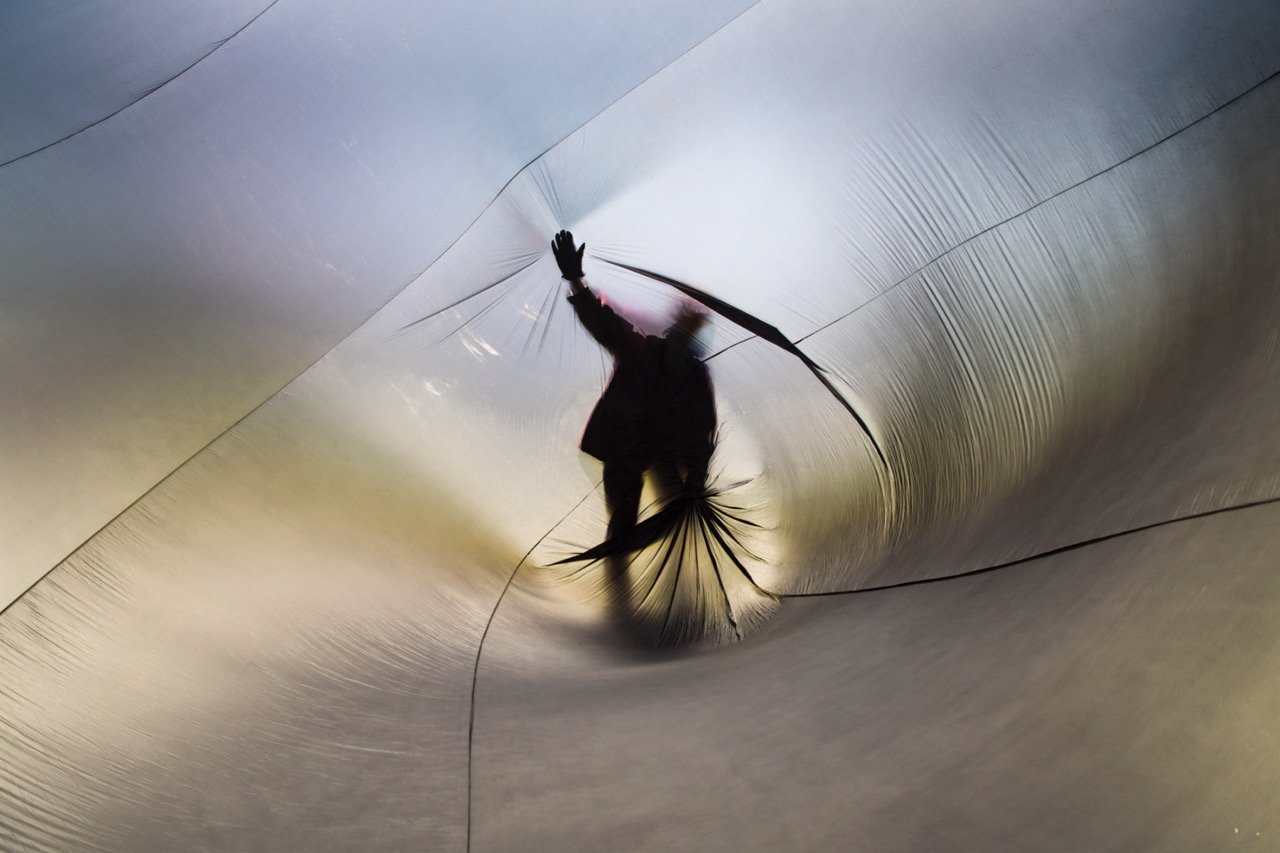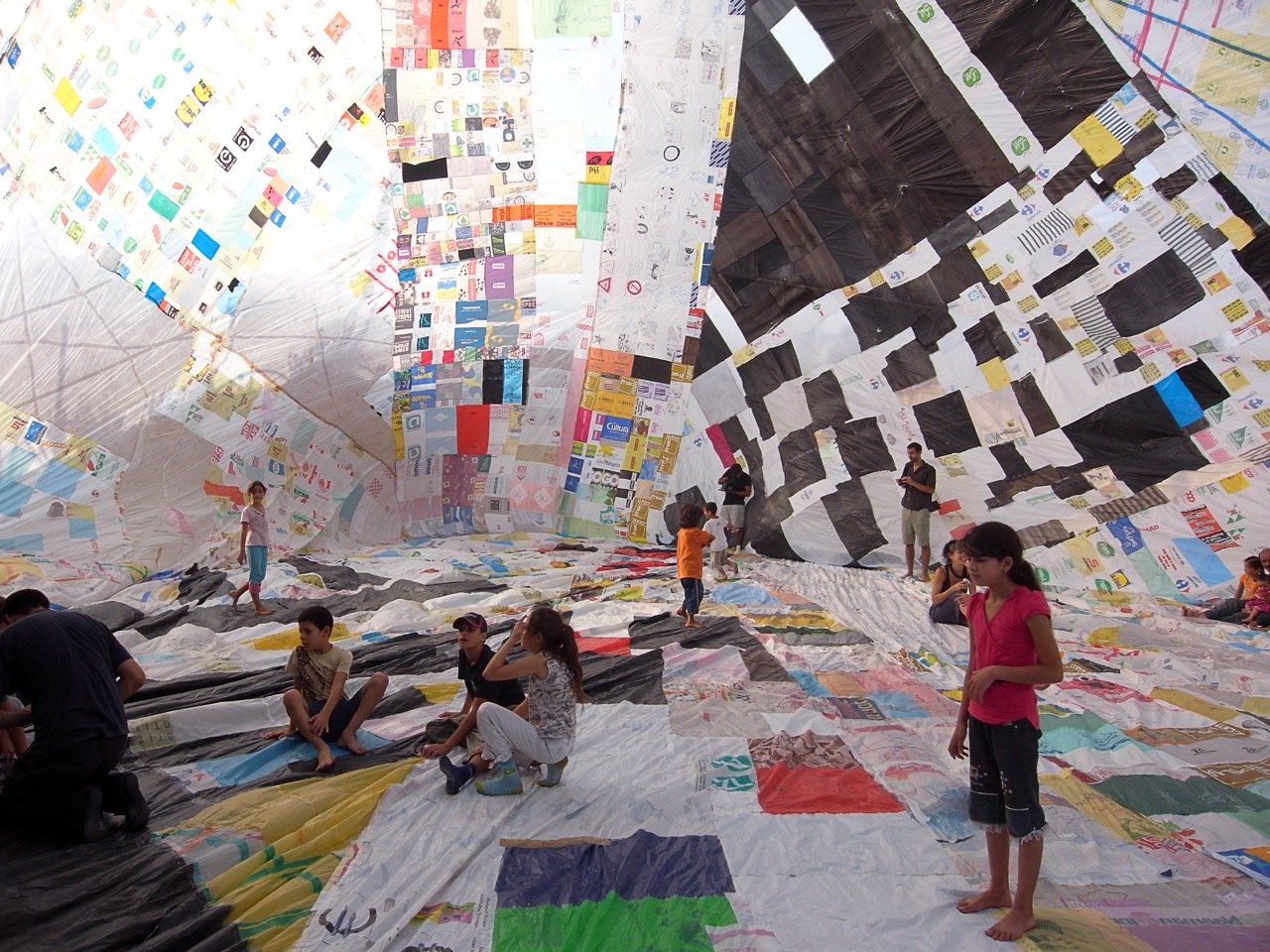Aerocene Backpack
What if we could fly without using fossil fuels?
With the Aerocene Backpack, Tómas Saraceno and the Aerocene Foundation created a unique floating sculpture that can fly by using the heat of the sun and the infrared heat emitted from Earth’s surface. The Aerocene Backpack moves through the air by harnessing the power of natural currents. At the core of Aerocene Backpack, lies an invitation to re-evaluate our relationship with the planet and explore alternative modes of transportation that minimise our reliance on fossil fuels.
Medium: Aerosolar sculpture, Canvas backpack, Recycled plastic bottle,
Ripstop balloon, Sensors
Year: 2015-Ongoing
Process
Aerocene sculpture flying an early prototype of the SenseAir, a DIT electronic device that can record atmospheric data such as temperature, humidity, barometric pressure and particulatte matter. Rummelsberg, Berlin, Germany.
Solar sculptures flying at the Aerocene Festival, Olympiaberg, 2019.
On air from Olympiaberg, Munich, 6–11 Sep 2019.
As part of the Kunst im Öffentlichen Raum program, Department of Arts and Culture, City of Munich.
Solar sculptures flying at the Aerocene Festival, Olympiaberg, 2019.
On air from Olympiaberg, Munich, 6–11 Sep 2019.
As part of the Kunst im Öffentlichen Raum program, Department of Arts and Culture, City of Munich.
An Aerocene Aeroglypha: a signature free from borders, free from fossil fuels.
Aerocene Tata Inti performance, Salinas Grandes, Jujuy, Argentina 2017.
Signed with Alicia de Arteaga, Maxi Bellman, Martín Bonadeo, Joaquín Ezcurra, Agustina de Ganay, Guido Ignatti, Maximiliano Laina, Pablo Lapadula, Inés Leyba, Eduardo Marengo, Ana Martínez Quijano, Tomás Saraceno, Sven Steudte, Pio Torroja, and Gabriela Urtiaga, with the support of Centro Cultural Kirchner (CCK) Buenos Aires.
An Aerocene Do it Together tracking device: this custom built PCB is equipped with a GPS module and a VHF radio transmitter, through which free floating Aerocen sculptures can boradcast their status and position through the radio amateur APRS system. Berlin, 2016.
An Aerocene solar sculpture seen from the inside. The fabric used for the sculpture is RipStop 7D, which is extremely lightweight and re-usable. Massachusetts Institute of Technology, Boston, USA
Aerocene Backpack DIT hacks, as part of Aerocene at Exhibition Road, Imperial College Advanced Hackspace, London, United Kingdom, 2016.
In late October 2016 the Aerocene project along with young scientists, designers, developers, and artists from Imperial College London and the Royal College of Art came together for a collaboration to hack the Aerocene Backpack.
Fly with Aerocene Pacha: Tomás Saraceno for Aerocene. January 2020, Salinas Grandes, Jujuy, Argentina. Human Solar Free Flight as part of Connect, BTS, curated by DaeHyung Lee
On the 25th of January 2020, 32 world records, recognised by FAI were set by Aerocene with Leticia Noemi Marques, flying with the message “Water and Life are Worth More than Lithium” written with the communities of Salinas Grandes, Jujuy, Argentina.
Museo Aero Solar, 2007–ongoing
Inaugural Museo Aero Solar -an airborne, lighter-than-air sculpture made only with reused plastic bags- project at Isola Art Center, Milano, Italy, 2007.
Museo Aero Solar, 2007–ongoing
This Museo Aero Solar construction took place in Ein Hawd, an Arab village in northern Israel, 2008.
During construction, the general public is invited to appropriate the Museo by drawing, writing stories, generating expressions. Once built, participants can fly the Museo Aero Solar, as well as inhabit it as an ephemeral architectural space.


